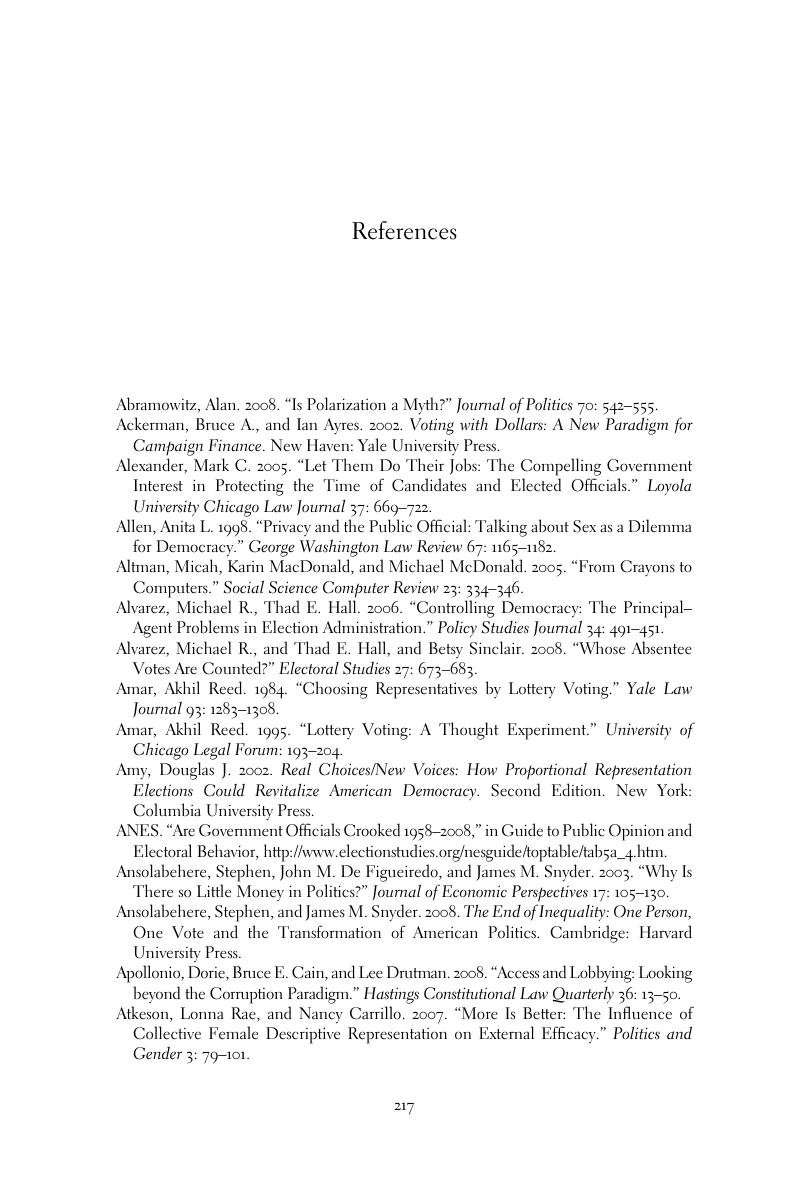Book contents
References
Published online by Cambridge University Press: 05 December 2014
Summary

Information
- Type
- Chapter
- Information
- Democracy More or LessAmerica's Political Reform Quandary, pp. 217 - 234Publisher: Cambridge University PressPrint publication year: 2014
